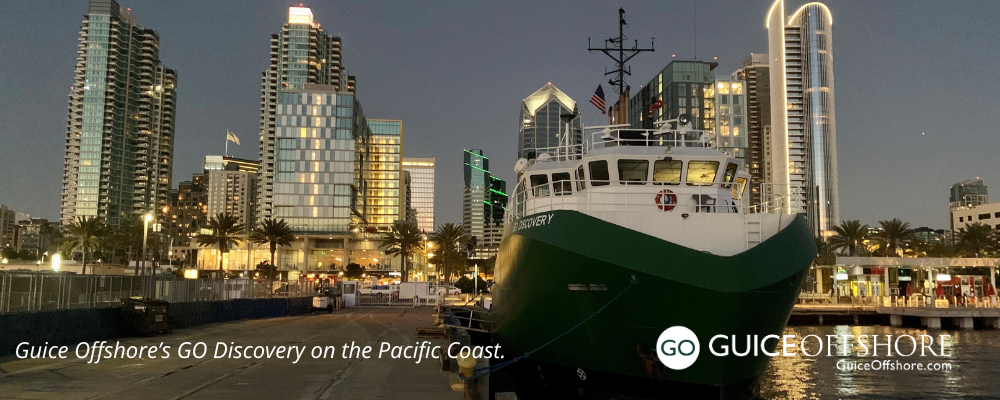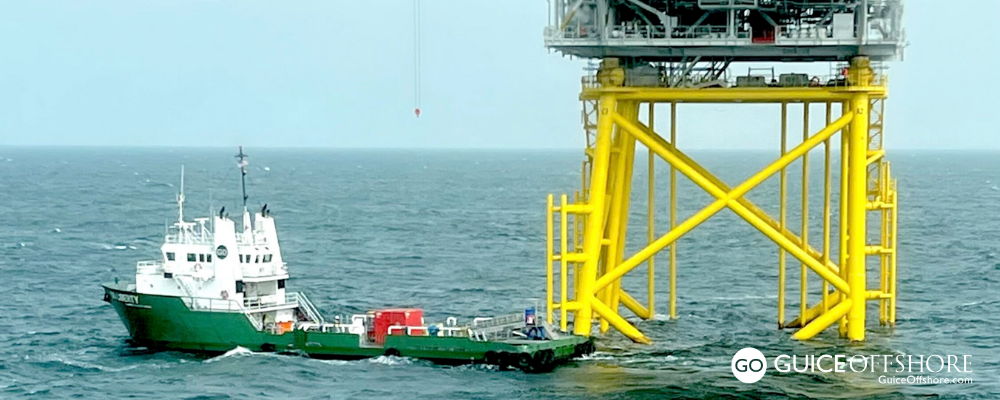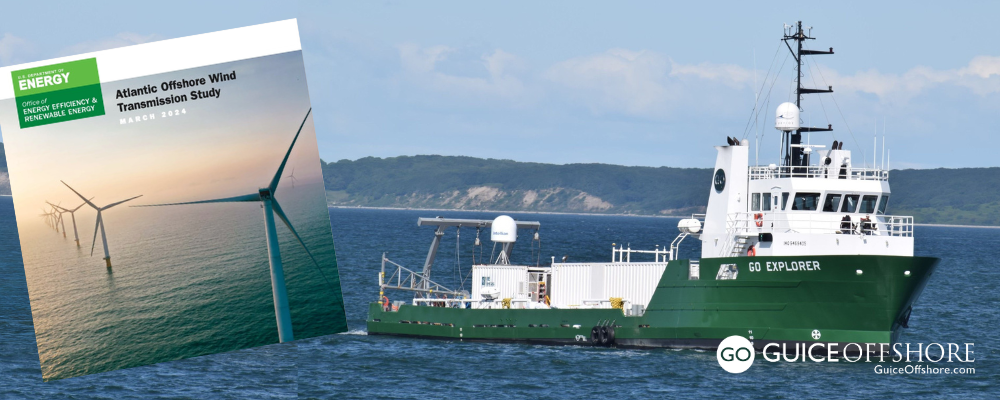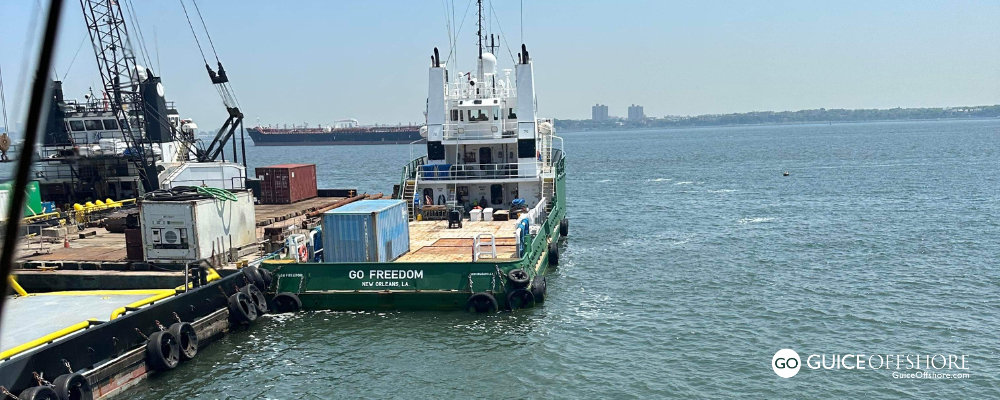The Bureau of Ocean Energy Management (BOEM) announced on February 13, 2024 that it has designated two final Wind Energy Areas (WEAs) in offshore Oregon. The WEAs were developed following extensive engagement and feedback from the state, Tribes, local residents, ocean users, federal government partners, and other members of the public. The final WEAs are based on reducing potential conflicts of ocean users, particularly on commercial fishing.
The two WEAs total approximately 195,012 acres and they avoid 98% of the areas recommended for exclusion due to their importance as commercial fishing grounds. The Coos Bay WEA is 61,204 acres and is located 32 miles from shore. The Brookings WEA is 133,808 acres and is about 18 miles from shore. A map of the final WEAs can be found on BOEM’s website.
“BOEM values its close coordination with the State of Oregon as we continue to work together to maintain a robust and transparent offshore wind planning process,” said BOEM Director Elizabeth Klein. “We will continue to work closely with Tribal governments, federal and state government agencies, ocean users, coastal communities and all interested stakeholders as we move forward with our environmental review.”
On Feb. 14, 2024, BOEM published a notice in the Federal Register HERE announcing its intent to prepare an environmental assessment of potential impacts from offshore wind leasing in the WEAs. The notice initiates a 30-day public comment period. Another public comment period would occur if BOEM decides to move forward with a lease sale in either of the WEAs.
In addition to engaging with the State, Tribes, coastal communities and ocean users, BOEM partnered with the National Oceanic and Atmospheric Administration’s National Centers for Coastal Ocean Science (NCCOS) to assess opportunities for wind energy development and reduce or avoid impacts on other important ocean uses in Oregon. The agencies developed a comprehensive, ecosystem-based ocean planning model that leverages the best available data on natural resources, ocean industries like fisheries and energy production, and areas of national security activities to identify areas with high wind energy resource potential and fewer potential impacts to other ocean users and sensitive environmental resources. This comprehensive approach provided valuable insights about the seascape and its uses and facilitated greater transparency and positive coordination with government partners and ocean stakeholders through direct engagement and incorporation of their feedback into the NCCOS model.
On Aug.15, 2023, BOEM announced a public comment period on two draft WEAs located offshore southern Oregon. The draft WEAs covered approximately 219,568 acres, with their closest points to land ranging from approximately 18 – 32 miles. The draft WEAs represented a subset of the original 1,159,298 acres (1,811 square miles) that the Department of the Interior identified for public comment in April 2022.
In response to its original Call for Information, BOEM received nominations of areas of interest from 4 developers. Each of the parties listed below has been legally, technically and financially qualified.
- Map of all Nominations Received
- Avangrid Renewables LLC
- BlueFloat Energy Oregon LLC
- OW North America Ventures LLC
- US Mainstream Renewable Power Inc
Since 2021, the Department of the Interior has approved the nation’s first six commercial-scale offshore wind energy projects. BOEM has held four offshore wind lease auctions, which have brought in almost $5.5 billion in high bids, including a record-breaking sale offshore New York and New Jersey and the first-ever sales offshore the Pacific and Gulf of Mexico coasts. BOEM is exploring additional opportunities for offshore wind energy development in the U.S., including in the Gulf of Maine and the U.S. Central Atlantic coast. The Department also continues to take steps to evolve its approach to offshore wind to drive towards union-built projects and a domestic-based supply chain.
For more information about Oregon activities, visit BOEM’s website.
The Department of the Interior’s Bureau of Ocean Energy Management (BOEM) is responsible for America’s offshore energy and mineral resources. The bureau promotes energy independence, environmental protection and economic development through responsible, science-based management of energy and mineral resources on the U.S. Outer Continental Shelf.
Oceantic Announces West Coast’s Floating Offshore Wind Port & Vessel Summit
Oceantic Network, the leading organization working to advance offshore wind and other ocean renewable industries and their supply chains, will host a Floating Offshore Wind Port & Vessel Summit on February 21-22 in Sacramento, California to help prepare the West Coast supply chain for floating offshore wind.
Hosted in partnership with the California Association of Port Authorities (CAPA), the Summit will convene key decision makers and innovators to set goals, identify challenges, and propose pathways to success for building critical port infrastructure and supporting the sector’s vessel demands.
The success of America’s floating wind industry will be dependent on its ability to establish robust port infrastructure and deploy the many specialized vessels needed to construct and maintain a floating wind farm.
As the pipeline of projects continues to grow, Oceantic said the offshore wind industry must come together to determine the logistics of affordably and efficiently receiving, transporting, holding, and installing turbine components.
The Summit, sponsored by Bardex, the Northern California Carpenters Union, the Port of Long Beach, and General Dynamics NASSCO, will facilitate these discussions to ensure an efficient rollout of floating offshore wind technology.
Floating OSW Port & Vessel Summit
Wednesday, February 21 & Thursday, February 22
Sacramento, California
February 21
CAPA Ports Day from 9 a.m. – 5 p.m.
Welcome Reception & Member Happy Hour from 6 p.m. – 8 p.m.
February 22
Registration & Breakfast from 7:30 a.m. – 9 a.m.
Keynote Address at 9 a.m. – David Hochschild, California Energy Commission
Floating OSW Market Overview (Presentation) at 9:10 a.m.
Building A Network of OSW Ports (Panel) at 9:25 a.m.
Working With Public Ports on the West Coast (Presentation) at 10:35 a.m.
Special Announcement at 11:25 a.m.
What Floating OSW Platforms Are Best for the West Coast? (Panel) at 11:35 a.m.
AB525: Understanding California’s OSW Strategic Plan (Panel) at 1:30 p.m.
Floating Vessel Needs & West Coast Shipbuilding (Presentation) at 2:20 p.m.
Understanding West Coast Environmental Standards and Stakeholder Engagement (Panel) at 3:40 p.m.
Additional Information:
Guice Offshore Has the Jones Act-Compliant Supply, Support and Platform Vessels To Help Meet Oregon Offshore Wind Goals
Guice Offshore’s growing fleet of Jones Act-compliant, dynamically positioned offshore supply vessels, mini supply vessels and platform vessels is well positioned to help meet our nation’s wind energy infrastructure installation and service goal deadlines, whether it’s crew transfer, service, cable laying, subsea work like scour protection or equipment transportation.
Guice Offshore vessels are well-maintained, well-manned and feature ample accommodations and sought-after equipment such as A-frames, cranes, winches, moonpools, deck sockets and essentials to facilitate a spectrum of highly specialized offshore projects.
We hold strategic partnerships throughout the United States, and maintain our highly capable vessels in accessible locations for quick response to myriad needs of the many specialty industries we serve like Offshore Wind.
Headquartered in Covington, Louisiana with our operations base in Lafayette, Louisiana and a northeastern Rhode Island office, Guice Offshore operates a 15-vessel fleet of U.S. Flag offshore vessels that includes Jones Act-compliant mini supply, multi-purpose and platform vessels in the 150-ft, 170-ft., 205-ft. and 294-ft. class with DP1 and DP2 certifications.
Guice Offshore operates from coast to coast in North America and select international locales.
Additionally, our subsidiary, GO Marine Services, a catering and offshore labor contractor, supports mission requirements that help minimize mobilization time and expense for Guice Offshore customers with special services like marine riggers, roustabouts and certified protected species observers in compliance with marine mammal regulatory requirements.
For charter inquiries, please contact David Scheyd at david.scheyd@guiceoffshore.com or (985) 273-2769



